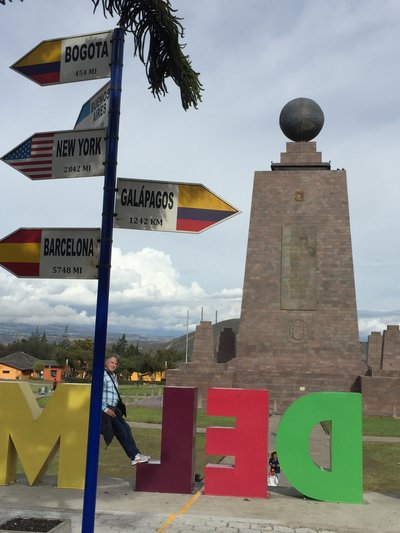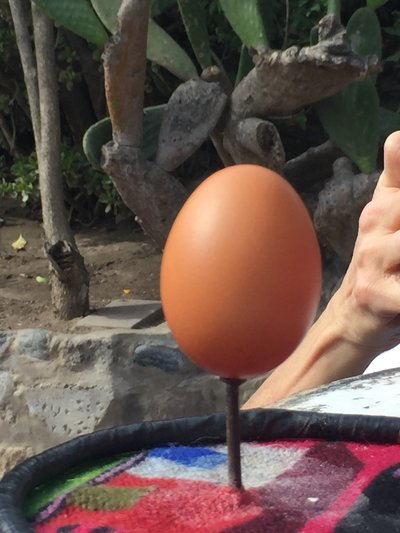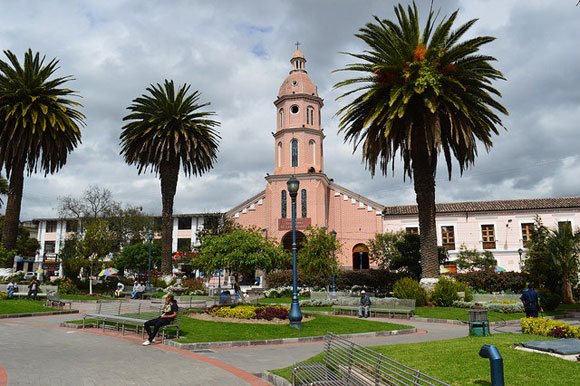By IL‘s Ecuador Insider, Donna Stiteler, and Guest Contributor, John Williams
Cuenca Looks Even Better for Retirees
By Donna Stiteler
Following the Great Recession of 2008-2009, many U.S. baby boomers looked for a new way to afford retirement. When real estate prices collapsed, and the stock market declined sharply, many faced losing their homes and depleted savings for their golden years. With publications like International Living touting life abroad as a serious, affordable alternative, a wave of boomers landed in Ecuador. By 2014, Cuenca alone had welcomed more than 10,000 expats.
Things settled down in the U.S.; the housing and stock markets rebounded. But now, a “retirement crisis” is brewing, and again baby boomers are looking at alternatives to the States. I’m living proof that retiring overseas can be a safe and financially secure alternative.
There’s reason to be concerned about retirement in the U.S., if you consider the following facts:
- 45% of boomers have no retirement savings
- They will have to retire on ONLY their Social Security
- The average Social Security check is $1,503 per month
- The pandemic has turned the global economy upside down
If you’re sitting in your recliner, watching the news blast that COVID-19 is spreading like wildfire, praying the stock market doesn’t crash, and wondering if you can make it on your Social Security alone… Then maybe it’s time to look at retiring overseas.

I am so happy I made my move to Ecuador in 2014. I wanted to get out of the rat race. To trade in my 50-hour work weeks and unhealthy lifestyle for days that had fun and joy in them. Retiring in Ecuador helped me do this.
Six years later, I’m glad I took this bet because it’s really paying off. I’m lucky to be here in Cuenca, where my expenses are low. I don’t have to worry about finances or if I can afford healthcare.
Plan B Becomes Plan A
I didn’t jump right into moving abroad. I approached it as my Plan B, all worked out should I need to put it into action. I went on an exploratory trip, traveling around Ecuador. I was looking for a place where I could escape the Florida heat; where I could live off my income, with enough money to visit my tight-knit family in the U.S. several times a year. The minute I stepped off the plane in Cuenca, with its Fall-perfect climate and welcoming culture (expats and locals), it was kismet. The breathtaking town was filled with historic architectural wonders, earning it its UNESCO World Heritage status. I thought to myself, well, if things don’t go well in the U.S., this is a great place.
My exploratory trip proved that, indeed, there was a viable alternative. I moved to Cuenca in the “class of 2014.” Rents were cheap, and opportunities plentiful. In fact, I rented my first apartment in Cuenca online, sight unseen. And I had a particularly challenging need—the apartment had to accommodate the four dogs I was bringing with me.
When I landed with four bags, and a pack of dogs, the first sight of my new abode took me pleasantly by surprise. It was three stories, with a winding wood staircase leading to five bedrooms and four bathrooms. And yes, it had a small yard for my dogs. My rental agreement was written on a white napkin. The cost? $450 per month.
Today, as I watch the world in a free fall, I feel lucky that I landed in Ecuador, and I feel safe here. My expat friends feel the same way. We’ve landed on our feet when others are not as sure footed.
With the pandemic raging across the globe, and a recession looming in Ecuador, too, will life get harder and more expensive here? Will the health system be jeopardized? I get asked these questions a lot by readers now.
Still Got It
Bear in mind the following considerations, and you’ll understand why you won’t be priced out of this market…
- Rent for a two/three-bedroom, two-bathroom home averages between $350 and $650, depending on size and location. The stable rents are due in part to a substantial overbuild, fueled by a 30% growth in tourism in the past five years, and expats retiring here.
- Your utilities could cost as little as $40 a month. Remember, you don’t need air or heat here in the Andes, where the climate is temperate.
- I don’t need a car. I can catch a $3.50 taxi, or pay 35 cents for a bus or tram ride to get around town.
- Ecuador is a self-sustaining country. Farms abound—so while other countries may be impacted by food shortages, those are unlikely here. Although, the cost of imported goods may rise—that Jiffy Peanut Butter may be more expensive.
It’s not all fairy dust, of course. There are some challenges ahead for Ecuador and for expats. International travel is a challenge right now. Ecuador did have a major outbreak early in the pandemic, near the coast. That has since been contained, and cases are relatively low now in Ecuador—especially in the Andes.
I credit the government for taking strict action. In April, we were in a total country lockdown. Masks were required, with stiff penalties given for noncompliance ($100 fine for the first offense, $400 for the second offense, $1,000 the third time, then jail). These are still strictly enforced. We are sprayed down with alcohol and our temperatures are taken going into most stores—even small tiendas. We have moved from total lockdown to a “yellow” reopening. There’s still a curfew, which starts at 6 p.m. for people over 60 and 11 p.m. for those under. There’s no crowded bars open, and restaurants are limited to outdoor seating. Social distancing is apparent everywhere. Large white dots are painted outside banks, restaurants, service buildings, and at malls, to indicate six feet of separation. People willingly comply.
We are not seeing an exodus of expats. Folks know this is a good place to shelter out a storm.
According to an article in CuencaHighLife, Faron Masters, an international insurance consultant, predicts: “There probably won’t be much change for voluntary expats, including retirees, in places like Mexico, Spain and Ecuador. In fact, I think the number for this group could actually go up as the virus subsides.”
Masters expects that in Cuenca, within a couple of years, “the number of older, voluntary expats [will] actually increase. One reason is economic conditions in North America and Europe. In the coming recession, many people will take a financial hit and some of them will be looking to relocate to places with lower costs of living.”
Ecuador becomes more attractive when you consider its use of the U.S. dollar. It runs around $750 at most to get from Ecuador to most places in the United States. Many expats use their day-to-day cost of living savings to travel back to visit their families or travel to Europe.
Over the past six years, because of the dynamic growth in tourism, Cuenca has blossomed into a truly cosmopolitan city. New migration of expats from Europe, the U.S., and Canada in the coming years will ultimately help grow the economy. But we do expect a period of recession, just as the entire world may experience.
Health and Other Considerations
IESS, Ecuador’s socialized medical program, will continue to serve anyone who signs up for it, but timing for appointments may be longer than expected during and after the pandemic.
However, I pay for most of my medical care in the private system, out of pocket—it’s so easy to do and costs 80% less than in the U.S. You can walk into any private doctor’s office without an appointment and see a general practitioner for $20, or a specialist for $40. Medicines run far below American pricing, and many that are on prescription in the States are available over the counter here.
In other words, I expect medical care to continue to be affordable for expats in Ecuador.
I like to say the expats in Cuenca are “sitting pretty.” We won’t lose our affordable healthcare, rents will remain flat, and food costs won’t skyrocket. The price of gas is subsidized and therefore controlled, though the consumer contribution may increase by about a dime a liter (gas is currently at 50 cents a liter, about $1.90 a gallon).
In short, expats here will still be able to live comfortably on $2,000 a month or less, especially if you don’t want a maid and gardener, or to dine out at expensive restaurants all the time.
When all this lifts, expats like myself will travel back and forth safely again to the United States. But we probably won’t be moving back for good.
Journey to the Middle of the Earth
By John Williams

No, this article isn’t about the fictional location in The Lord of the Rings… You won’t learn anything about the upcoming series expected in 2021 that takes place in the Second Age of Middle-earth. This story is about a real place, where an egg can balance on the head of a nail; where water drops straight down the sinkhole without swirling; where the sun comes up and sets within 16 minutes of the same time…every day…all year long.
Welcome to en la Mitad del Mundo…“in the Middle of the World”…the monuments at the equator in the province of Pichincha, just 67 miles from where I live on the beach in the sleepy fishing town of Santa Marianita. Yes, the equator is of such significance to Ecuador that the country itself was named for it.
While I never grow tired of strolling on the beach, playing in the ocean, and enjoying an adult beverage on our deck while watching (and listening to) the waves, there are a lot of other incredible places to explore within driving distance from our home base, not least the Middle of the Earth.
The equator itself crosses the land or territorial waters of 13 countries, and many of them have some marking, monument, or park to designate the line between the Northern and Southern hemispheres. In Ecuador, that monument is named en la Mitad del Mundo, but it’s actually in two different locations.
The larger monument was built in 1982, commemorating the spot where the original equatorial line was marked in 1736. Then-current methods of locating a particular point on planet Earth were “close enough.” Years later, space-based GPS systems were developed and deployed, and it was discovered that the actual equatorial line was about 250 meters north. So, a second, smaller monument was built to designate the “real” spot. OK, it’s not really a second smaller monument…it’s a sign on a path! But, it’s my favorite part of the area. Here’s where you’ll find demonstrations, showing water swirling down a sink in different directions, depending on whether it’s a few feet north or south of the equatorial line. You can also observe an egg balanced on the head of a nail. Because the Earth spins at about 1,000 MPH at the equator, the greater centrifugal force weakens the gravitational pull, making it easier to balance things. Useless information, you say? Well, this 69-year-old guy was able to walk toe-to-heal down a straight line without so much as a wobble! Take that, Oshiffer Jones!

In addition to the equator monuments themselves, there’s also a planetarium, plus numerous other exhibit buildings, with information on other nations who host the Equator within their borders. The box next to “explore the equator in Ecuador” has now been checked!
In my relatively short time living in this country, I have driven the entire Pacific coast many times, witnessing its wonders… I have experienced both of the big cities, Quito and Guayaquil. I have spent several days exploring and playing in a golf tournament in the beautiful UNESCO World Heritage City of Cuenca, and toured the Amazon rainforest for four days. I have shopped in the world-renowned “Leather Town” of Cotacachi, and visited the internationally famous street markets in Otavalo. Next up…the Galápagos Islands.
Retirement in Ecuador is very relaxing…but it certainly isn’t boring! Stay tuned.

